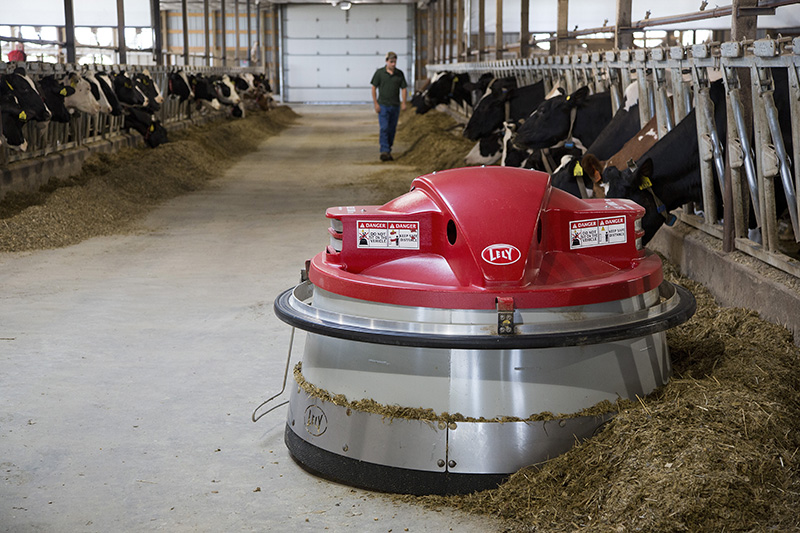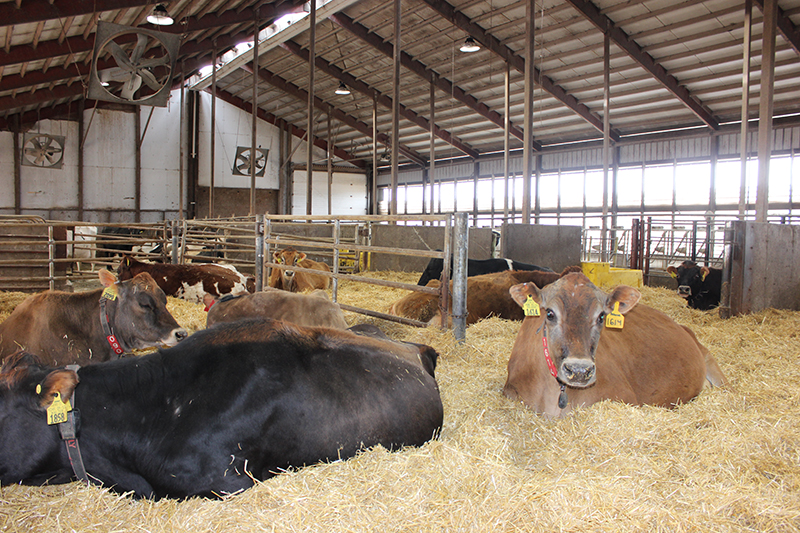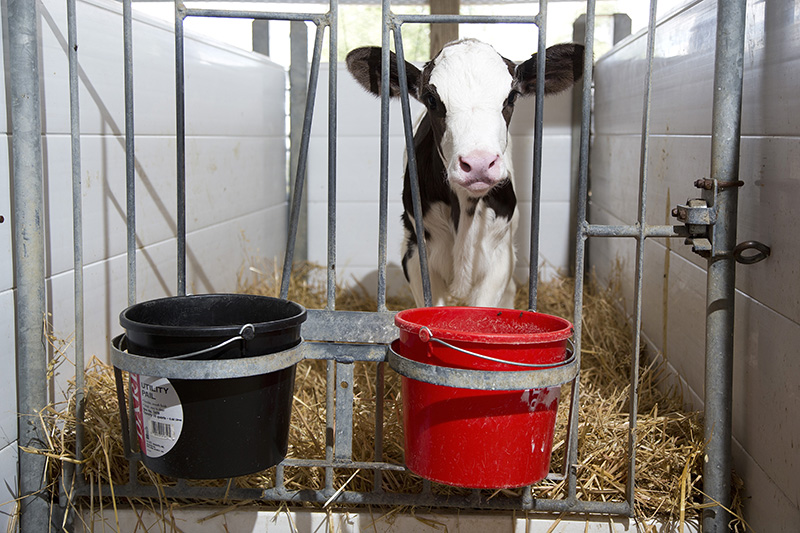Dairy
Iowa’s Dairy Center is a one-of-a-kind facility that opened in 2000. Operated by the Northeast Iowa Dairy & Agriculture Foundation, Iowa’s Dairy Center is used to prepare men and women to operate dairy farms, provide ongoing education for dairy farmers and serve as a public educational facility.

Milking Parlor
The Dairy Center used to milk more than 100 cows three times a day in the milking parlor. This unique double-eight milking parlor demonstrated both herringbone and parallel parlor styles, making it the only dairy educational facility to feature this type of comparison. In 2024, the Dairy Center switched to fully robotic milking. The parlor space is still open for viewing, but you will not be able to see cows being milked in it. The future of this space is still unknown. Stay tuned for updates!
Robotic Milking
Automatic Milking Systems (robots) are becoming more popular in the United States, particularly in Iowa. Iowa's Dairy Center added two Lely A4 robots to the farm in 2013. The Dairy Center upgraded to Lely A5 robots and added a third robot in 2024.
Each robot milks approximately 60 cows, milking 160 of the farm’s Holstein cows in total. With robots, cows can be milked up to six times per day, with the average cow being milked three to four times daily. While the cows are being milked, the robot dispenses feed for her to eat. The robotic milking process begins when the cow enters the robot. Teats are recognized and cleaned with brushes. Then, the robot uses a laser to attach the milking unit to each teat and milk begins to flow. After, a teat dip is sprayed on to sanitize the teat and the cow exits the robot. Before the next cow enters, the robot performs a rinse to ensure cleanliness.
Did you know? With robots, cows have the freedom to choose their own schedule. This means they can be milked, eat and rest whenever they want.
See for yourself: Robots milk cows 24/7. A viewing platform allows visitors to watch the process of cows being milked anytime.


Freestall Barn
The milking herd is housed in the farm's freestall barn. The roomy stalls are bedded with sand to provide cows with a comfortable resting area. A spacious bunk offers the cows free-choice, fresh feed. In most pens, automatic scapers keep the pen clean. The tunnel ventilated barn keeps the animals cool in the heat of the summer and warm in the winter.
The freestall barn is home to two additional robots. The Lely Juno is a robotic feed pusher that keeps feed within reach of the cows. This robot pushes feed once an hour between the hours of 11 a.m. and 5 a.m. The Lely Discovery is a robotic manure scraper which keeps the slatted pen clean.
Did you know? A dairy cow eats up to 100 pounds of feed and spends 14 hours resting each day.
Maternity Barn
The maternity barn is home to the herd’s dry cows. Just like humans, cows are pregnant for nine months. A cow can milk for a majority of their pregnancy, but when a cow is approximately seven months pregnant, she will be dried off meaning she will no longer be milked until she has her calf. During this time, cows spend their time in the maternity barn relaxing until their calf is born. Cows will have their calves on a bedded pack with fresh straw. The dairy staff closely monitors the barn for cows calving and if necessary, are there to assist with the birth. On your tour, you may have the chance to see a calf being born!
Did you know? A cow will give birth to her first calf at approximately two years old.


Calf Barn
When calves are born, they are brought to the calf barn to be raised. Each calf will be placed in their own individual pen for eight weeks. There, they will receive individualized care from the farm staff. Milk is fed to the calves twice daily and they have access to feed and water at all times. At around eight weeks of age, calves will be weaned and moved into a group housing.
Did you know? On our farm, all of the calves are given a name at birth. All calves receive ear tags used for identification which includes their name, sires name and date of birth.

